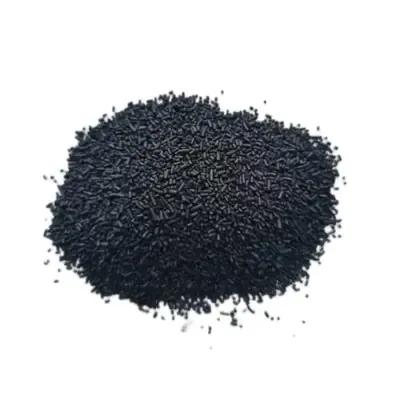
Activated charcoal and activated carbon are often used interchangeably, leading to confusion about whether they refer to the same substance. In this article, we will explore the similarities and differences between activated charcoal and activated carbon to clarify their identities and applications.

Activated charcoal and activated carbon are both derived from carbonaceous materials, such as wood, coconut shells, peat, or coal, through a process called activation. This process involves heating the carbon source to high temperatures, followed by exposing it to oxidizing gases, steam, or chemicals, which creates a highly porous structure with a large surface area. The resulting material is known for its ability to adsorb a wide range of impurities and contaminants.
Activated charcoal is typically produced from organic materials, such as wood or coconut shells, and is primarily used for medical and health-related purposes. It is commonly found in products like water filters, air purifiers, and medical supplements. The porous structure of activated charcoal enables it to trap and remove impurities, toxins, and odors from air and water, making it an effective purification agent.
On the other hand, activated carbon is a broader term that encompasses a variety of carbonaceous materials, including both organic and inorganic sources. It is widely used in industrial applications, such as water treatment, gas purification, and chemical processing. Activated carbon's versatility and adsorption capabilities make it an essential component in environmental remediation, gas masks, and air and water purification systems.
Despite their different applications, the distinction between activated charcoal and activated carbon is not always clear-cut. In some contexts, the terms are used interchangeably, leading to confusion. However, it is important to recognize that activated charcoal specifically refers to the form of activated carbon derived from organic sources, while activated carbon encompasses a broader range of carbonaceous materials.
Both activated charcoal and activated carbon share common properties, such as high porosity and large surface area, which make them effective adsorbents for a wide range of substances. Their porous structure allows them to trap and retain contaminants through a process known as adsorption, where molecules adhere to the surface of the material. This adsorptive capacity is what makes activated charcoal and activated carbon valuable in various purification and filtration processes.
In the realm of health and wellness, activated charcoal has gained popularity for its purported detoxifying and cleansing properties. It is often used in dietary supplements, skincare products, and emergency treatment for certain types of poisoning. The porous nature of activated charcoal enables it to absorb toxins and chemicals in the digestive system, preventing their absorption into the bloodstream.
In contrast, activated carbon finds extensive use in industrial and environmental applications. Its ability to remove impurities, volatile organic compounds, and contaminants from air and water makes it indispensable in wastewater treatment, air pollution control, and gas purification. The versatility of activated carbon extends to sectors such as pharmaceuticals, food and beverage processing, and environmental protection.
In summary, while activated charcoal and activated carbon are derived from similar processes and share common properties, they are distinct in terms of their applications and sources. Activated charcoal specifically refers to the form of activated carbon derived from organic materials, and it is primarily used in health and wellness products. On the other hand, activated carbon encompasses a broader range of carbonaceous materials and finds extensive use in industrial, environmental, and commercial applications.
Understanding the differences and applications of activated charcoal and activated carbon is essential for utilizing their unique properties effectively. Whether it's purifying water, filtering air, or enhancing health and wellness, both substances play crucial roles in various spheres, contributing to cleaner environments and improved well-being.
In conclusion, while activated charcoal and activated carbon are often used interchangeably, they represent distinct materials with diverse applications. By clarifying their identities and applications, we can gain a deeper understanding of their roles in purification, filtration, and health-related processes.
I hope this article provides clarity on the similarities and differences between activated charcoal and activated carbon, shedding light on their distinct properties and applications.